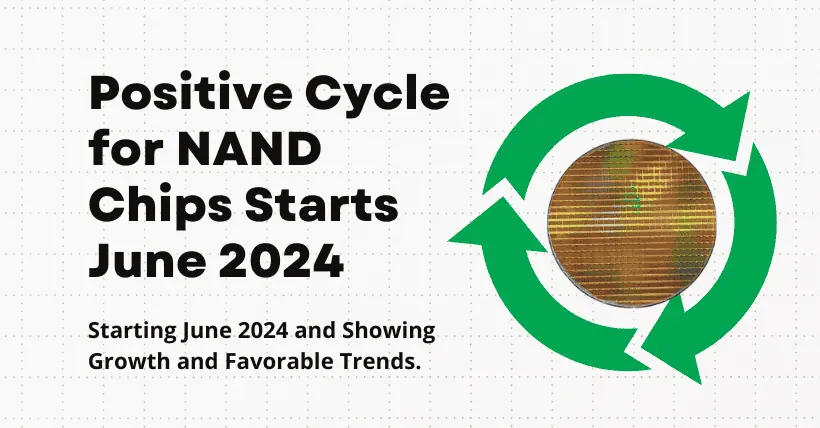Kioxia has fully terminated its production cut measures, with June’s capacity utilization rate returning to 100%.
NAND chip manufacturers are significantly ramping up production in the second half of the year, but the retail market demand has not yet recovered. The spot prices of wafers are falling, with some prices dropping more than 20% below contract prices, making future price increases difficult to sustain.

According to statistics, Kioxia is the world’s second-largest NAND chip supplier, with a market share of approximately 15% to 20%, second only to Samsung. Previously, as NAND chip prices plummeted, Kioxia was the first to reduce production by 30%, followed by several other NAND chip suppliers, which led to a price rebound and recent profitability for NAND chip manufacturers.
Amid the price rebound, Kioxia has announced plans to resume full capacity operations, intending to mass-produce the most advanced NAND chips at its Yokkaichi plant in July to cater to the surging data storage demand driven by the proliferation of generative AI.
Given Kioxia’s return to full production capacity in June, the increased production of NAND chips is expected to enter the market as early as August or September.

Phison believes that the current enterprise SSD demand for NAND chip manufacturers is strong, and market prices have returned to pre-pandemic levels, allowing for normal profitability. They are working to recoup the losses incurred in 2023, so prices are firm, likely to rise rather than fall, indicating a positive cycle.
ADATA holds a more conservative view. The primary reason is that the seven major global NAND chip suppliers suffered significant losses over the past year. As prices rebound, chip manufacturers will increase production capacity and expand sales to offset the losses of 2023, potentially leading to an oversupply situation again.
TeamGroup notes that with AI PC DRAM capacity requirements at 24GB-32GB and NAND chips needing at least 1TB, the clear upward trend in demand will lead to increased shipments for them.

Disclaimer: This article is created by the original author. The content of the article represents their personal opinions. Our reposting is for sharing and discussion purposes only and does not imply our endorsement or agreement. If you have any objections, please get in touch with us through the provided channels.



